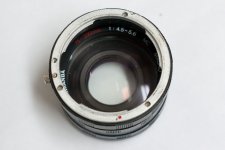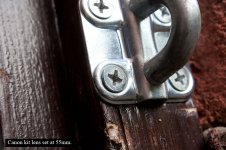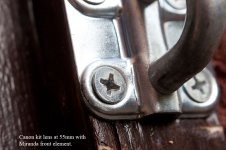alphan
Well-known member
Paul, your first shot is indeed over exposed but I think there are also elements of OOF. The lost of light seems quite high with the elements as expected but I think the one with macro extension came out the best. Do you stack the front element together with the telenegative or spaced apart?
Fernando, that front element act like a diopter lens or similar to Raynox macro add-on? What magnification did you get?
thornlv, all looks nice but I think your DOI came out more crisp. That 150-500 shot looks like toy camera shot when you put them together with the 80ED.
BTW, can somebody advice on how to do multiple quote with reply?
Fernando, that front element act like a diopter lens or similar to Raynox macro add-on? What magnification did you get?
thornlv, all looks nice but I think your DOI came out more crisp. That 150-500 shot looks like toy camera shot when you put them together with the 80ED.
BTW, can somebody advice on how to do multiple quote with reply?








